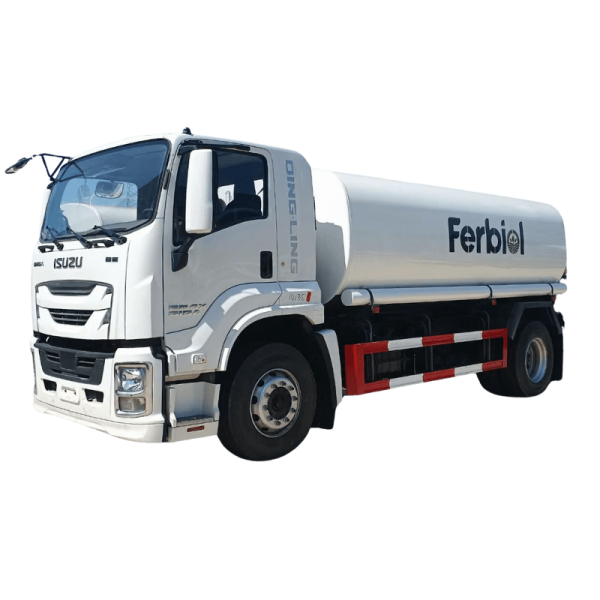Introduction
Waste management is a crucial aspect of urban living, ensuring cleanliness, hygiene, and environmental sustainability. Garbage compactor trucks play a vital role in this process by efficiently collecting and compacting waste materials from residential, commercial, and industrial areas. These specialized vehicles come equipped with a range of features designed to streamline the waste collection and disposal process. In this comprehensive guide, we will explore the various features of garbage compactor trucks and their importance in modern waste management systems.
1. Types of Garbage Compactor Trucks
There are several types of garbage compactor trucks available in the market, each designed for specific applications and waste collection requirements. The most common types include:
- Rear Loader Compactor Trucks: These trucks feature a hydraulic compactor mechanism at the rear of the vehicle, making them ideal for collecting waste from residential areas and small businesses.
- Front Loader Compactor Trucks: Front loader trucks are equipped with a front-loading mechanism, making them suitable for collecting waste from commercial and industrial locations with large waste volumes.
- Side Loader Compactor Trucks: Side loader trucks are designed with a side-loading mechanism, allowing them to collect waste from narrow streets and areas with limited access.
- Transfer Station Compactor Trucks: These trucks are used to transport waste from collection points to transfer stations or disposal sites, where the waste is further processed or disposed of.
2. Compactor Mechanism
One of the key features of garbage compactor trucks is the compactor mechanism, which compresses the collected waste to maximize the truck's carrying capacity. The compactor mechanism typically consists of a hydraulic system that applies pressure to the waste, reducing its volume and increasing the truck's efficiency in waste collection. The compactor mechanism may be located at the rear, front, or side of the truck, depending on the type of compactor truck.
3. Hydraulic System
Garbage compactor trucks are equipped with powerful hydraulic systems that control the compactor mechanism, as well as other functions such as lifting and dumping the waste containers. The hydraulic system is essential for the efficient operation of the compactor truck, providing the necessary power and control to handle various waste collection tasks.
4. Waste Collection Bins
Garbage compactor trucks are designed to collect waste in specialized bins or containers, which are then emptied into the compactor mechanism for compression. Water tank truck storage may vary in size and material depending on the type of waste being collected and the specific requirements of the waste management system. Some trucks are equipped with multiple bins to separate different types of waste for recycling or disposal.
5. Automated Lifting and Dumping Systems
To streamline the waste collection process, many garbage compactor trucks are equipped with automated lifting and dumping systems. These systems allow the truck operator to lift and empty the waste containers into the compactor mechanism with minimal manual effort, reducing the risk of injuries and improving operational efficiency.

6. Safety Features
Safety is a top priority in waste management operations, and garbage compactor trucks are equipped with various safety features to protect both the operators and the public. These features may include backup cameras, warning lights, emergency stop buttons, and automatic locking mechanisms to prevent accidents and ensure safe operation of the vehicle.
7. Environmental Considerations
In addition to efficiency and safety, garbage compactor trucks are designed with environmental considerations in mind. Many modern compactor trucks are equipped with emission control systems to reduce air pollution, as well as leak-proof containers to prevent waste leakage and minimize environmental impact. Some trucks are also designed to accommodate recycling and composting efforts, helping to promote sustainability in waste management practices.
8. Maintenance and Serviceability
Regular maintenance and servicing are essential to ensure the optimal performance and longevity of garbage compactor trucks. These vehicles are designed with serviceability in mind, featuring easy access to key components for inspection, repair, and maintenance. Manufacturers often provide training and support for operators and maintenance personnel to ensure the proper care and upkeep of the vehicles.
Conclusion
Garbage compactor trucks play a crucial role in modern waste management systems, providing an efficient and effective solution for collecting and disposing of waste materials. These specialized vehicles are equipped with a range of features designed to streamline the waste collection process, improve operational efficiency, and promote environmental sustainability. By understanding the various features of garbage compactor trucks and their importance in waste management operations, stakeholders can make informed decisions to enhance their waste management practices and contribute to a cleaner and healthier environment.
